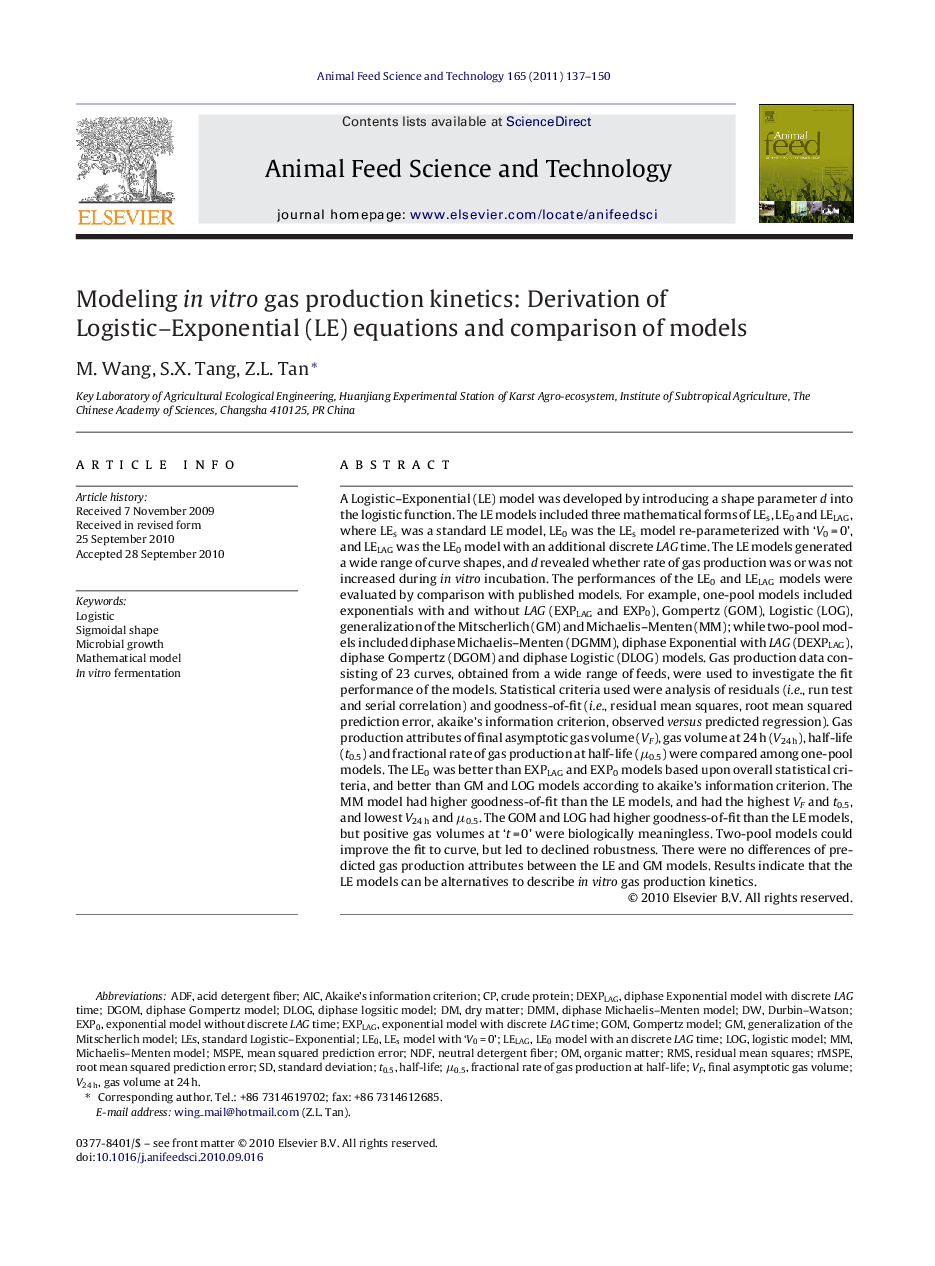| Article ID | Journal | Published Year | Pages | File Type |
|---|---|---|---|---|
| 2420060 | Animal Feed Science and Technology | 2011 | 14 Pages |
A Logistic–Exponential (LE) model was developed by introducing a shape parameter d into the logistic function. The LE models included three mathematical forms of LEs, LE0 and LELAG, where LEs was a standard LE model, LE0 was the LEs model re-parameterized with ‘V0 = 0’, and LELAG was the LE0 model with an additional discrete LAG time. The LE models generated a wide range of curve shapes, and d revealed whether rate of gas production was or was not increased during in vitro incubation. The performances of the LE0 and LELAG models were evaluated by comparison with published models. For example, one-pool models included exponentials with and without LAG (EXPLAG and EXP0), Gompertz (GOM), Logistic (LOG), generalization of the Mitscherlich (GM) and Michaelis–Menten (MM); while two-pool models included diphase Michaelis–Menten (DGMM), diphase Exponential with LAG (DEXPLAG), diphase Gompertz (DGOM) and diphase Logistic (DLOG) models. Gas production data consisting of 23 curves, obtained from a wide range of feeds, were used to investigate the fit performance of the models. Statistical criteria used were analysis of residuals (i.e., run test and serial correlation) and goodness-of-fit (i.e., residual mean squares, root mean squared prediction error, akaike's information criterion, observed versus predicted regression). Gas production attributes of final asymptotic gas volume (VF), gas volume at 24 h (V24 h), half-life (t0.5) and fractional rate of gas production at half-life (μ0.5) were compared among one-pool models. The LE0 was better than EXPLAG and EXP0 models based upon overall statistical criteria, and better than GM and LOG models according to akaike's information criterion. The MM model had higher goodness-of-fit than the LE models, and had the highest VF and t0.5, and lowest V24 h and μ0.5. The GOM and LOG had higher goodness-of-fit than the LE models, but positive gas volumes at ‘t = 0’ were biologically meaningless. Two-pool models could improve the fit to curve, but led to declined robustness. There were no differences of predicted gas production attributes between the LE and GM models. Results indicate that the LE models can be alternatives to describe in vitro gas production kinetics.
